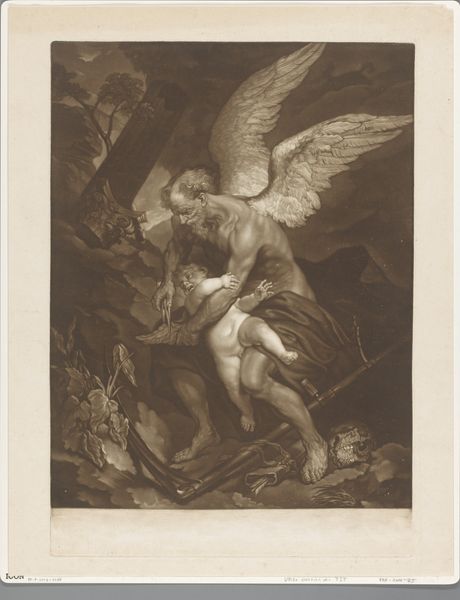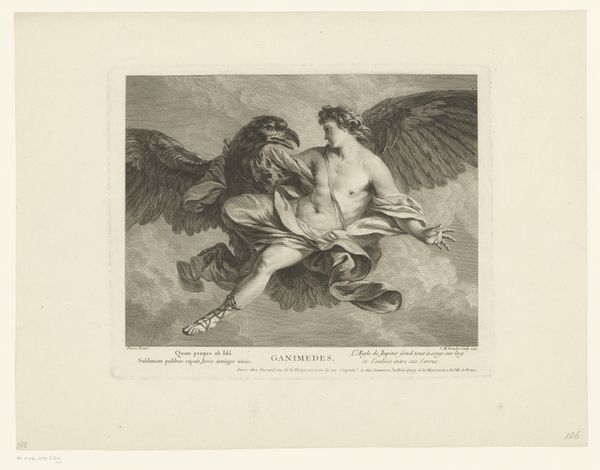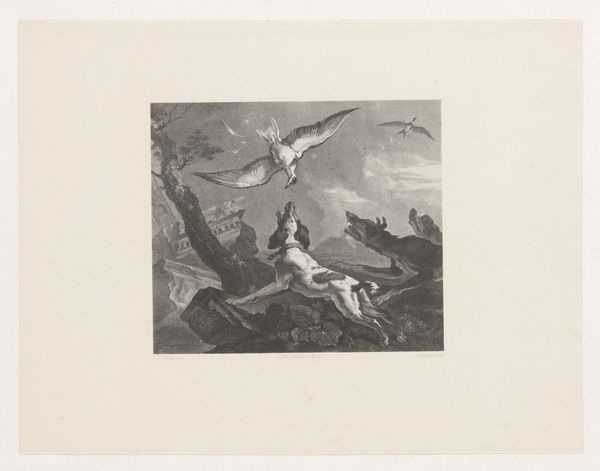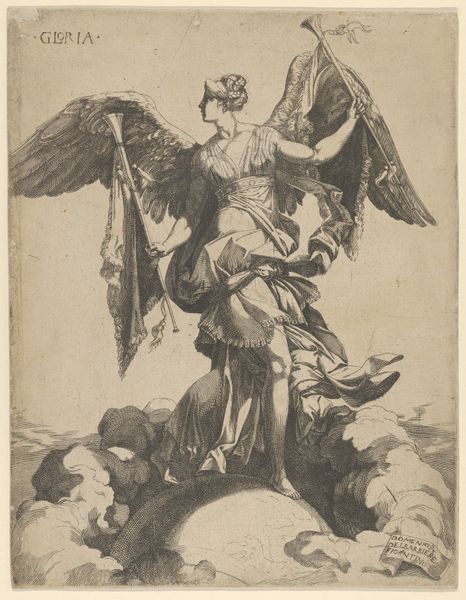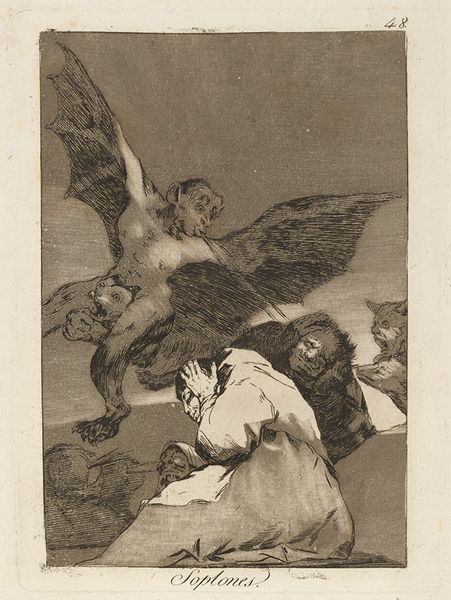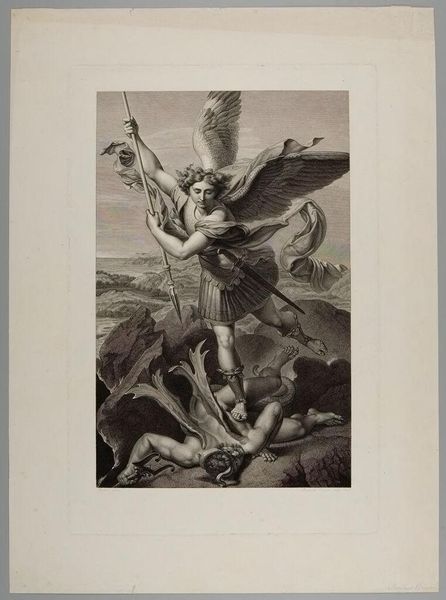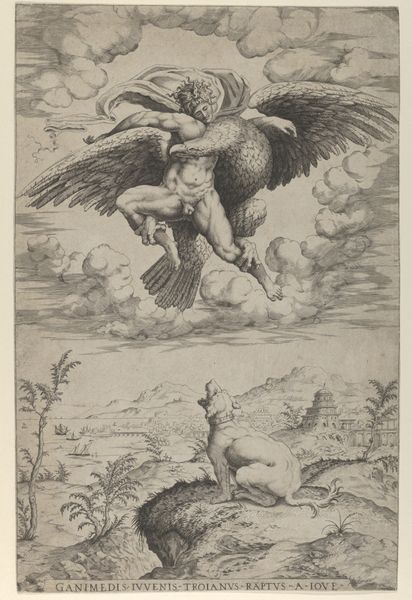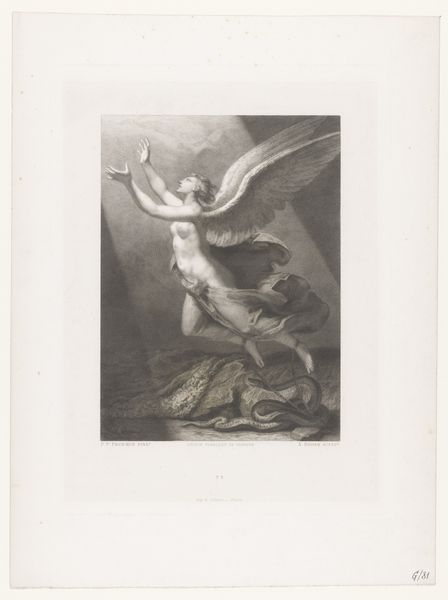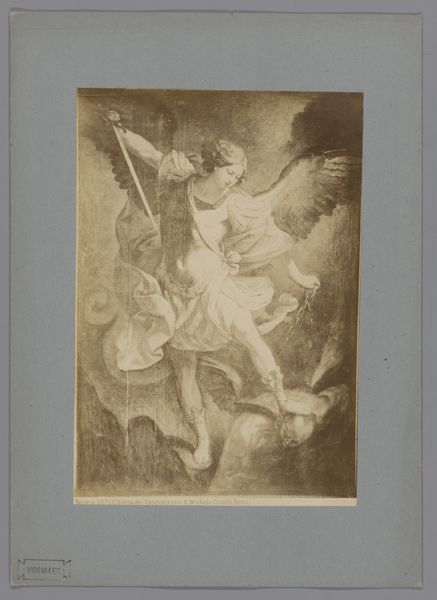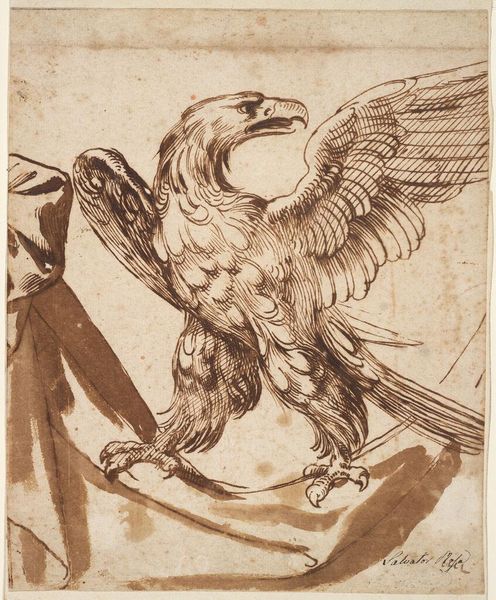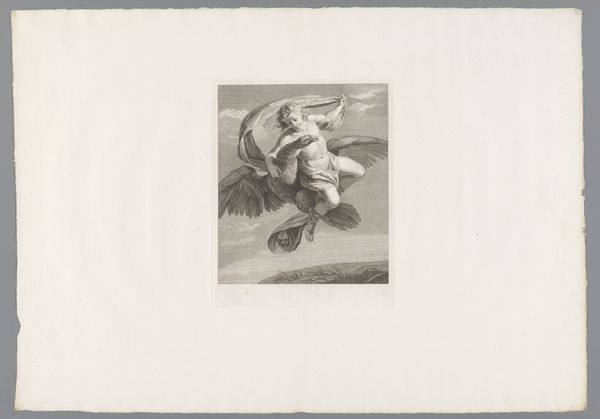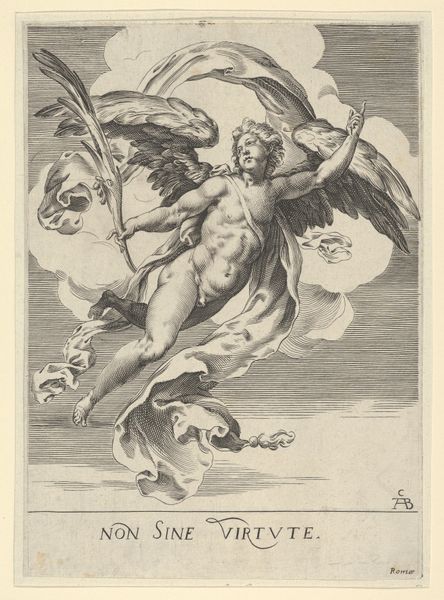
drawing
#
drawing
#
allegory
#
classical-realism
#
romanticism
#
nude
Dimensions: height 260 mm, width 242 mm
Copyright: Rijks Museum: Open Domain
Editor: Here we have "The Abduction of Ganymede" a drawing by Pieter Christoffel Wonder, created sometime between 1790 and 1852. The nude figure of Ganymede seems almost weightless as he's carried off by the eagle. What does this piece suggest to you? Curator: It immediately brings to mind the complexities of power and mythology. This is a classical subject, Ganymede being abducted by Zeus in the form of an eagle, but Wonder's rendition raises questions about the reception of classical ideals during a time of shifting social values. Editor: How so? Curator: Well, think about the audience for this drawing. Was it intended for private contemplation, or for public display? The story of Ganymede, which can be interpreted in homoerotic terms, had a complicated reception. Were Wonder's contemporaries aware of such connotations and how might this work challenge or conform to the then existing social attitudes around desire? Editor: I hadn't considered the potential public versus private aspect. It also fits into a romantic tradition, looking back to classical themes but tinged with something… darker, perhaps? Curator: Exactly! Romanticism often reinterpreted classical subjects through a lens of heightened emotion and subjectivity. Do you think the drawing invites viewers to question the relationship between power and beauty or perhaps to find some kind of commentary on societal power dynamics? The artist presents the figure realistically instead of flattering it to match social standards, what might the artist have tried to express using a less traditional aesthetic of that time? Editor: I see it now. Wonder seems to use this mythological scene to comment on the complex societal attitudes of his era. This has really broadened my understanding, I thought I understood this at first glance, but this has so many underlying contexts and implications. Curator: Precisely, the value of this drawing lies in understanding its social life: how it was viewed, interpreted, and circulated within its specific historical context, which reflects its timeless artistic value.
Comments
No comments
Be the first to comment and join the conversation on the ultimate creative platform.

